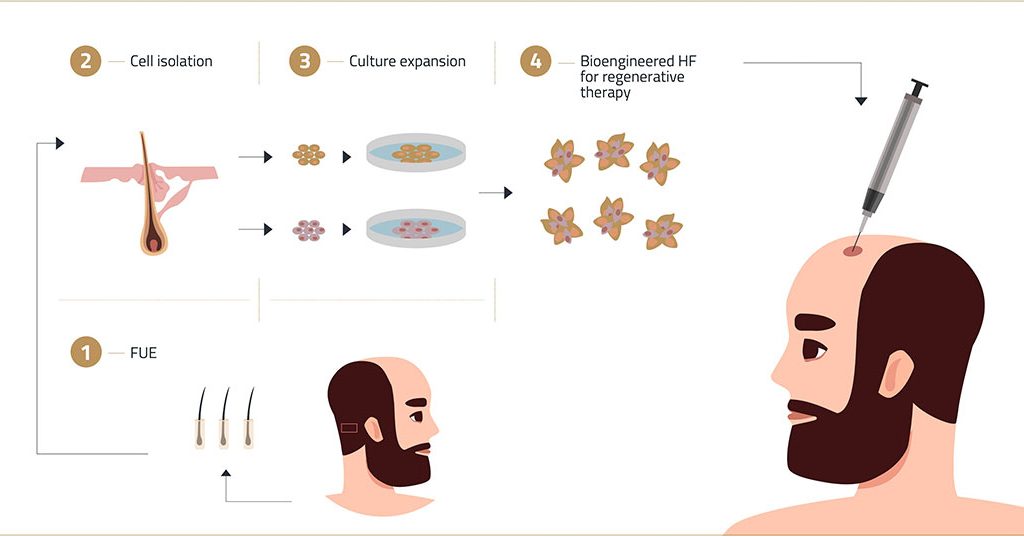

Multiplication of follicular units, the future of definitive treatments for alopecia
Insparya Hair Science’s research aims to develop innovative pharmacological and cell-based regenerative therapies so that patients who don’t have enough donor area can still find a solution to reverse hair loss.
Thanks to this project and the study of the complexity of the hair follicular unit to find a definitive solution to cure alopecia. Our cutting-edge discoveries are being implemented in the development of therapeutic solutions that improve patients’ quality of life.
Currently, research is focused on:
- The study of the molecular signatures of human hair follicle cells and how they are altered i) by androgenic alopecia and ii) in response to pharmacological treatments. We drew on the team’s expertise in multi-genomic approaches to study the defective signalling pathways in androgenic alopecia and those recovered following pharmacological treatments.
- The development of high-throughput cellular assays with the aim of identifying new compounds that are capable of maintaining and/or restoring the hair-inducing properties of follicle stem cells.
- Preclinical validation of the efficacy of a new compound to improve the hair follicle growth cycle, using both human hair follicle organ cultures and animal models.
- Integration of the knowledge generated by the aforementioned approaches to improve the expansion of hair follicle cells in vitro, maintaining their inductive potential to generate small hair follicle germs with clinical promise.

In a previous study published in the specialty journal Dermatological Surgery, we found that saline solution at 4ºC supplemented with ATPv is the best condition to preserve the viability and functionality of follicular units while they are maintained ex vivo during the hair transplant procedure.
This discovery has led to greater efficiency in the hair transplants performed at Insparya, which is an advantage for patients and an improvement in the results the patient sees.
